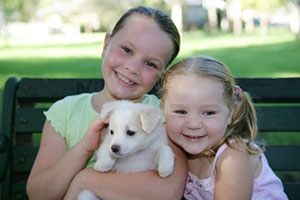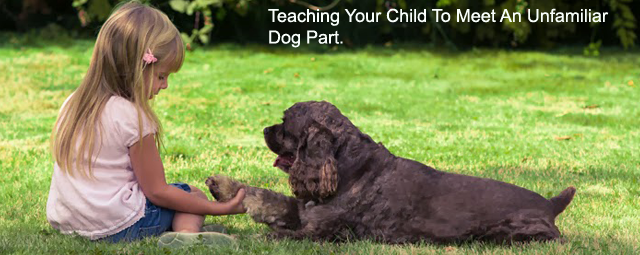Teaching Your Child To Meet An Unfamiliar Dog Part II
Children, both from homes with dogs and from homes without, should be instructed from a young age about greeting new dogs. Children from homes with dogs are especially prone to forgetting that not all dogs can be approached like the resident one. Teaching your child to never run at a strange dogs. They should never squeal or make other loud or sudden noises. Young children (2-6) should never approach a dog by themselves. Admire it from afar. If a parent is present and the dog’s owner is willing—again, adult judgment of every situation is critical—these younger children should be encouraged to ask to pet the dog.
As a parent, a clear indication that an owner has taught his dog how to greet a child is indicated by the dog’s calm nature. Meet a new dog should never involve being licked or jumped on; children should know not to approach a leashed dog that is straining or not under control of the owner. If the owner gives permission and the dog is under control, the child should approach slowly with their hands out and visible. Children should understand that the dog will want to sniff them; this is okay. After the first sniff, they can gently pet the dog. Children should not “hug” or attempt to take the leash from the owner. Parents should also help children understand that once they have greeted a dog, the dog’s owner may want to continue on their way—children should not protest or otherwise hold the dog’s collar as the dog is leaving.
Finally, parents are the best examples for their children. Respect for animals within the family unit is very  important; wholesome attitudes toward animals should be established at an early age (whether or not a family has pets). Their examples and behavior will ensure that older children who find themselves in situations where a parent may not be present act properly when meeting dogs. By this age (7+), youngsters should know to always ask to greet a dog. Additionally, they should also have become familiar with the non-verbal cues indicating an owner does not want to be approached.
important; wholesome attitudes toward animals should be established at an early age (whether or not a family has pets). Their examples and behavior will ensure that older children who find themselves in situations where a parent may not be present act properly when meeting dogs. By this age (7+), youngsters should know to always ask to greet a dog. Additionally, they should also have become familiar with the non-verbal cues indicating an owner does not want to be approached.






